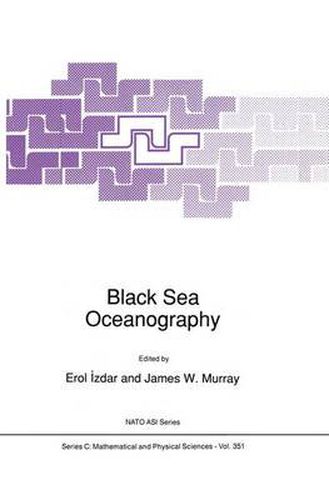Readings Newsletter
Become a Readings Member to make your shopping experience even easier.
Sign in or sign up for free!
You’re not far away from qualifying for FREE standard shipping within Australia
You’ve qualified for FREE standard shipping within Australia
The cart is loading…






This title is printed to order. This book may have been self-published. If so, we cannot guarantee the quality of the content. In the main most books will have gone through the editing process however some may not. We therefore suggest that you be aware of this before ordering this book. If in doubt check either the author or publisher’s details as we are unable to accept any returns unless they are faulty. Please contact us if you have any questions.
Anoxic basins are ofgreat interest to oceanographersofall disciplines. Theirextreme conditionsresult from acombinationofhigh oxygen utilization and restricted circulation. It is necessery to understand present -day anoxic environments ifwe are to understand the early evolution of the oceans (e.g. SiIlen, 1965). Sarmiento et al.(1988a) explored the causes of anoxia in the global ocean, which is in effect a closed basin and in marginal seas such as the Eastern Mediterranean (Sarmiento et al. 1988b). Anoxic conditions have been proposed toexist in various ocean basins at different times in the geological past (e.g. the Crataceous period; Weissert, 1981) and possibly as recent as the last glacial maximum (e.g., Sarmiento and Toggweiler,1984). The modern Black Sea has been considered as the type anoxic basin. It is the world’s 2 3 largest permanaently anoxic basin (area = 423,000 km; volume = 534,000 km ) and is thought to be aquasi-steady state system. It is extremely isolated from the rest ofthe world’s oceans. Only the narrow and shallow Bosporus Strait provides water exchange with the Mediterranean. Concentrationsofhydrogen sulfide reach valuesof350 Mm in the deep water and the oxygen-hydrogen sulfide Interface exists between 80 and 200m waterdepth. The hydrographic regime is characterized by low salinity surface water of riverine origin overlying high salinity deep waterofMediterranean origin. Asteep pycnocline is the primary phycical barrier to mixing and is the origin of the stability of the anoxic interface.
$9.00 standard shipping within Australia
FREE standard shipping within Australia for orders over $100.00
Express & International shipping calculated at checkout
This title is printed to order. This book may have been self-published. If so, we cannot guarantee the quality of the content. In the main most books will have gone through the editing process however some may not. We therefore suggest that you be aware of this before ordering this book. If in doubt check either the author or publisher’s details as we are unable to accept any returns unless they are faulty. Please contact us if you have any questions.
Anoxic basins are ofgreat interest to oceanographersofall disciplines. Theirextreme conditionsresult from acombinationofhigh oxygen utilization and restricted circulation. It is necessery to understand present -day anoxic environments ifwe are to understand the early evolution of the oceans (e.g. SiIlen, 1965). Sarmiento et al.(1988a) explored the causes of anoxia in the global ocean, which is in effect a closed basin and in marginal seas such as the Eastern Mediterranean (Sarmiento et al. 1988b). Anoxic conditions have been proposed toexist in various ocean basins at different times in the geological past (e.g. the Crataceous period; Weissert, 1981) and possibly as recent as the last glacial maximum (e.g., Sarmiento and Toggweiler,1984). The modern Black Sea has been considered as the type anoxic basin. It is the world’s 2 3 largest permanaently anoxic basin (area = 423,000 km; volume = 534,000 km ) and is thought to be aquasi-steady state system. It is extremely isolated from the rest ofthe world’s oceans. Only the narrow and shallow Bosporus Strait provides water exchange with the Mediterranean. Concentrationsofhydrogen sulfide reach valuesof350 Mm in the deep water and the oxygen-hydrogen sulfide Interface exists between 80 and 200m waterdepth. The hydrographic regime is characterized by low salinity surface water of riverine origin overlying high salinity deep waterofMediterranean origin. Asteep pycnocline is the primary phycical barrier to mixing and is the origin of the stability of the anoxic interface.